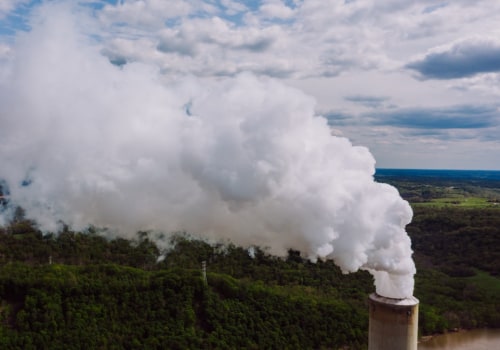As an air quality expert, I have witnessed the profound impact that clean air can have on our well-being. The Clean Air Act, a set of programs implemented by the Environmental Protection Agency (EPA), has played a crucial role in reducing the levels of six common pollutants and numerous toxic pollutants. These pollutants, including particulate matter, ozone, lead, carbon monoxide, nitrogen dioxide, and sulfur dioxide, can have serious consequences on our health if left unchecked. Clean air is essential for good health and a high quality of life. Poor air quality can lead to respiratory diseases and even cancer.
This is why it is crucial to address both indoor and outdoor air pollution. Outdoor pollutants such as tropospheric ozone, particles, and allergens can have a significant impact on our health. Meanwhile, indoor pollutants like secondhand smoke, mold, and radon can also pose a threat to our well-being. In addition to the health implications, poor air quality can also limit our ability to participate in activities we enjoy. While everyone is at risk from poor air quality, those with pre-existing medical conditions such as asthma, emphysema, or COPD are particularly vulnerable.
This is why it is essential to maintain good air quality for the overall habitability of a community. One of the most dangerous pollutants is carbon monoxide (CO), a colorless, odorless, and tasteless gas that is produced by the incomplete combustion of carbonaceous fuels. To learn more about these contaminants and others, visit the EPA's website. The World Health Organization (WHO) has established Global Air Quality Guidelines (AQG) to provide guidance on the thresholds and limits of major air pollutants that pose health risks. These guidelines are developed through a transparent and evidence-based decision-making process and include interim objectives to promote a gradual change from high concentrations to lower concentrations.
As an expert, I have seen the importance of these guidelines in promoting a healthier environment for all. Unfortunately, there are currently initiatives that jeopardize these standards. In this article, I will review the history of air pollution regulations, discuss current threats to these standards, and highlight the scientific evidence that supports the need for maintaining and strengthening air pollution standards, especially for the health of our children. The EPA is responsible for identifying and establishing national ambient air quality standards to protect people and the environment from pollutants such as sulfur oxides. However, the agency often falls behind in this task. This is why it is crucial for local and state governments to take action.
For example, in Tennessee, the Department of Transportation (TDOT) has implemented the Congestion Mitigation and Air Quality Improvement (CMAQ) program to address air pollution. Additionally, local air pollution control programs in counties such as Davidson, Hamilton, Knox, and Shelby are overseen and supported by the Air Pollution Control Division. The Clean Air Act was designed by Congress to protect public health and welfare from various types of air pollution caused by a wide range of sources. Unfortunately, people living in low- and middle-income countries are disproportionately affected by outdoor air pollution. In fact, 89% of premature deaths related to outdoor air pollution occur in these areas.
This highlights the need for global action to address this issue. It is important to note that children are particularly vulnerable to the effects of air pollution. While all children are at risk of respiratory symptoms related to exposure to pollutants, those with chronic respiratory diseases like asthma may be at an even greater risk. This is why it is crucial for policymakers in sectors such as energy, transport, waste management, urban planning, and agriculture to work together to address outdoor air pollution, as many sources of pollution are beyond individual control.










